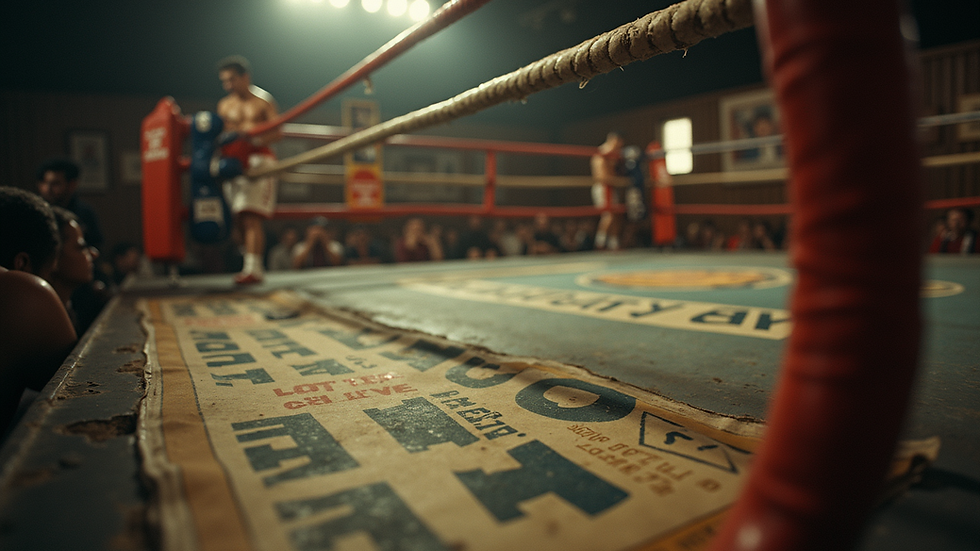The Evolution of Punching Sports Over the Decades
- Fistic Romance

- Jul 9
- 3 min read
Punching sports have been a significant part of human culture for centuries. From bare-knuckle brawls in ancient times to the refined techniques of modern boxing (https://www.fisticromance.com/), the landscape of these sports has evolved drastically. This blog explores the fascinating journey of punching sports, delving into their origins, transformations, and future trends.
The History of Punching Sports
Punching sports can trace their roots back to ancient civilizations. Evidence of fist-fighting can be found in artifacts from Egypt, where drawings depict individuals engaging in combat as far back as 3000 BC. Over time, different cultures adopted their fighting styles, such as Pankration in Greece, which combined elements of wrestling and striking.

Fast forward to the 18th century, boxing became more formalized in England with the introduction of standardized rules. The "Queensberry Rules" in 1867 marked a significant shift, laying the foundation for modern boxing. This era also saw the introduction of gloves, providing a crucial layer of safety for fighters.
The Transformation of Punching Sports in the 20th Century
The 20th century brought enormous changes to punching sports. With the rise of boxing champions like Jack Johnson, Joe Louis, and Muhammad Ali, the sport garnered immense popularity. Johnson, the first African American heavyweight champion, broke racial barriers and showcased the athletic prowess of black boxers, paving the way for future athletes.

The sport continued to evolve with the introduction of television. Boxing matches became prime-time events, allowing fan engagement to soar. The rise of pay-per-view events brought in significant revenue, making boxing not just a sport but a lucrative industry. By the late 20th century, mixed martial arts (MMA) emerged, further expanding the definition of punching sports. This new trend integrated various combat styles, creating a dynamic environment where fighters could use striking and grappling techniques.
The Cultural Impact of Punching Sports
Punching sports have significantly shaped cultural narratives over the decades. They have not only served as entertainment but also as a stage for social issues, politics, and identity. For instance, Muhammad Ali transcended sports as a civil rights activist, using his platform to speak against the Vietnam War and promote racial equality.

Furthermore, the portrayal of punching sports in films and literature has left a lasting impact on society. Movies like "Rocky" and "Raging Bull" highlight the struggles and triumphs of fighters, drawing parallels with broader human experiences. These narratives inspire individuals to overcome personal challenges, thereby solidifying the cultural significance of punching sports.
The Modern Era and Technological Advances
As we have entered the 21st century, punching sports continue to adapt to technological advancements. Today's athletes are leveraging performance-enhancingwearable technology, training apps, and detailed analytics to enhance their strategies and in-ring performance. Virtual reality training is also being adopted, allowing boxers and MMA fighters to gain a competitive edge without the risks associated with rigorous physical training.
Moreover, promotional platforms like social media have revolutionized how athletes connect with fans and market themselves. Fighters now have direct channels to build their brands, showcase their training regimens, and engage with supporters beyond traditional media.
This shift has contributed to the rise of celebrity athletes within punching sports. Fighters like Conor McGregor have transformed themselves into global icons, attracting fans from varied demographics and significantly impacting the sports' economics.
The Future of Punching Sports
Looking ahead, the future of punching sports seems promising. With growing awareness around fitness and health, more individuals are drawn to martial arts as a means of self-defense and personal discipline. This inflow of participants could foster a new generation of fighters, fueling the evolution of the sport.
Additionally, the ongoing integration of technology in training, broadcasting, and fan engagement will redefine how these sports are experienced. For instance, augmented reality experiences could allow fans to interact with their favorite athletes in new ways, enhancing their connection to the sport.
Furthermore, the rise of women's boxing is another exciting trend. As more female athletes attain visibility and recognition, the sport will likely evolve to meet the increasing demand for women’s competitions, ultimately enriching the overall community and broadening its appeal.
Inspired by the Evolution of Punching Sports
Punching sports have made a remarkable journey from their ancient origins to their current state, continuing to captivate audiences and shape cultural landscapes. As these sports evolve with technological advancements and shifting societal values, they present endless possibilities for growth and adaptation.
As an avid fan or participant, it's crucial to stay informed about these changes. Understanding the roots and evolution of punching sports can enhance your appreciation of the craft while inspiring new generations of fighters. Whether engaging in training or simply enjoying a good match, the spirit of punching sports will undoubtedly continue to thrive for decades to come.




Comments